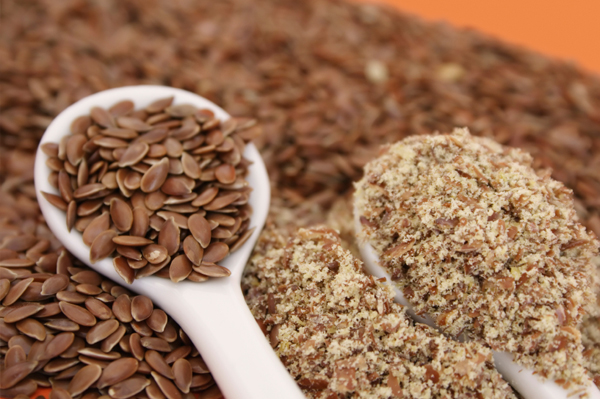One of the most frequent questions is “what is the most
nutritious food that I can eat?”, or “what one food will make me feel better?”
We read and hear so much about "miracle foods". There are lists
of the "Top 10 Miracle Foods". And Dr. Oz always tells his audience
about the latest miracle food. Whether it is pomegranates, raspberry
ketones, acai berry, or moringa, everyone wants something, anything, that will
make them healthier. And if you can put it in a capsule, that would be
even better! A magic pill, Yes!! I will take one. But this doesn't
exist because if it did, we would all be healthy. Of note, the journal of Nutrition and Cancer recently
published an article, "Reality check: There is no such thing as a
Miracle Food" discussing Dr. Oz effect of miracle foods.
So what do I tell people when they ask me these questions. First, I tell
them there are no miracle foods and they should not waste their money on
expensive supplements. Instead eat plenty of fruits and vegetables of many
different colors. Each color has a different set of antioxidants. Red fruits
and vegetables contain nutrients such as lycopene, ellagic acid,
quercetin, and hesperidin, to name a few. These nutrients reduce the risk of prostate
cancer, lower blood pressure reduce tumor growth and LDL cholesterol levels,
scavenge harmful free-radicals, and support join tissue in arthritis cases.
Orange and yellow contain betacarotene,
zeaxanthin, flavonoids, lycopene, potassium, and vitamin C. These nutrients
reduce age-related macular degeneration and the risk of prostate cancer, lower
LDL cholesterol and blood pressure, promote collagen formation and healthy
joints, fight harmful free radicals, encourage alkaline balance, and work with magnesium
and calcium to build healthy bones. Green vegetables contain chlorophyll,
fiber, lutein, zeaxanthin, calcium, folate, vitamin C, calcium, and
Beta-carotene. The nutrients found in these vegetables reduce cancer risks,
lower blood pressure and LDL cholesterol levels, normalize digestion time,
support retinal health and vision, fight harmful free-radicals, and boost
immune system activity. Blue and purple contain nutrients which include
lutein, zeaxanthin, resveratrol, vitamin C, fiber, flavonoids, ellagic acid,
and quercetin. Similar to the previous nutrients, these nutrients support
retinal health, lower LDL cholesterol, boost immune system activity, support
healthy digestion, improve calcium and other mineral absorption, fight
inflammation, reduce tumor growth, act as an anticarcinogens in the digestive
tract, and limit the activity of cancer cells. White contain nutrients such as
beta-glucans, EGCG, SDG, and lignans that provide powerful immune boosting
activity. These nutrients also activate natural killer B and T cells, reduce
the risk of colon, breast, and prostate cancers, and balance hormone levels,
reducing the risk of hormone-related cancers.
But this information is not enough for most people. They
want to hear me name some foods. Ok, ok... I will come up with some foods
that are loaded with antioxidants, fiber, and protein that you can find at your
local supermarket. These are some high quality foods to include in a
healthy, well balanced eating plan:
1. Amaranth
2
. Beans
3. Beets
4. Blueberries
5. Broccoli
6. Chia
seeds
7. Garlic
8. Green
Tea
9. Kefir
10. Walnuts
Amaranth - You thought quinoa was the best grain. Think
again. Amaranth is a gluten free grain that is higher in protein than
quinoa. Amaranth appears to lower cholesterol via its content of plant
stanols and squalene. And it is fast and easy to prepare.
Beans - Why? It is true that beans are good for your
heart. They are high in fiber, high in protein, low in fat and calories, high
in B vitamins, magnesium, phosphorus and iron, inexpensive. When you
increase your fiber intake, increase your water intake to reduce the side
effects of eating beans. Or take Beano.
Beets - Beets are high in folate, mangenese, vitamin C,
potassium and fiber. They contain a variety of antioxidants.
Betanin and vulgaxanthin are the two best-studied betalains from beets, and
both have been shown to provide antioxidant, anti-inflammatory, and
detoxification support. Beet greens are high in lutein and zeaxanthin.
Yellow beets are very high in lutein. Lutein and zeaxanthin are important for
eye health.
Blueberries – These berries are high in the
antioxidant anthocyanins and other antioxidants including resveratrol.
They are low glycemic index, high in magnesium, vitamin K, vitamin C and fiber,
and low in calories. They are another heart healthy food that is an
immune booster.
Broccoli - Want to detox naturally? Eat broccoli.
Broccoli contains the phytonutrients glucoraphanin, gluconasturtiian, and
glucobrassicin which support all steps in body's detox process, including
activation, neutralization, and elimination of unwanted contaminants.
Isothiocyanates are the detox-regulating molecules made from broccoli's glucosinolates,
and they help control the detox process at a genetic level. Broccoli is
also high in fiber, vitamin C, vitamin K, folate and antioxidants. It is
an anti-inflammatory food due to the flavoinoid kaempferol.

Chia seeds -
Chia
seeds are whole grains that have a very high content of fiber. Even though the seeds are small and don’t
appear to be nutrient dense, they are packed with protein, potassium, dietary
fiber and omega-3 fatty acids. Chia
seeds are replacing flax seeds due to their higher omega 3 fatty acid content
and fiber content.
Garlic - Garlic contains flavonoids and sulfur-containing
nutrients. Garlic may help improve iron metabolism - the diallyl sulfides
in garlic help increase production of a protein called ferroportin.
Garlic's sulfides can help dilate our blood vessels and help keep our
blood pressure under control. Garlic also contains powerful antioxidants and
anti-inflammatories.

Green Tea - Green tea is one of the least processed teas and
thus provides the most antioxidant polyphenols, notably a catechin called
epigallocatechin-3-gallate , which is believed to be responsible for most of
the health benefits linked to green tea. Green tea drinkers appear to have
lower risk for a wide range of diseases, from simple bacterial or viral
infections to chronic degenerative conditions including cardiovascular disease,
cancer, stroke, periodontal disease, and osteoporosis. Green tea contains three
major components that promote fat loss: catechins, caffeine and theanine. Green
tea may also increase exercise endurance, but you might need to drink 4 cups in
order to get this benefit.

Kefir -Kefir is a fermented milk drink that is practically
lactose free. It is very high in probiotics which support gut health. Kefir
contains certain healthy bacteria that is not available in yogurt, including
Lactobacillus Caucasus, Leuconostoc, Acetobacter species, Streptococcus
species, Saccharomyces kefir and Torula kefir. It is a good source of
vitamin A, D and calcium.
Walnuts - Did you know that approximately 90% of the phenols
in walnuts are found in the walnut skin, including key phenolic acids, tannins,
and flavonoids? They are also high in vitamin E and omega 3 fatty acids
which are heart protective. Phytonutrient research on the
antioxidant and anti-inflammatory benefits of walnuts has moved this food
further and further up the ladder of foods that are protective against
metabolic syndrome, cardiovascular problems, and type 2 diabetes.

















